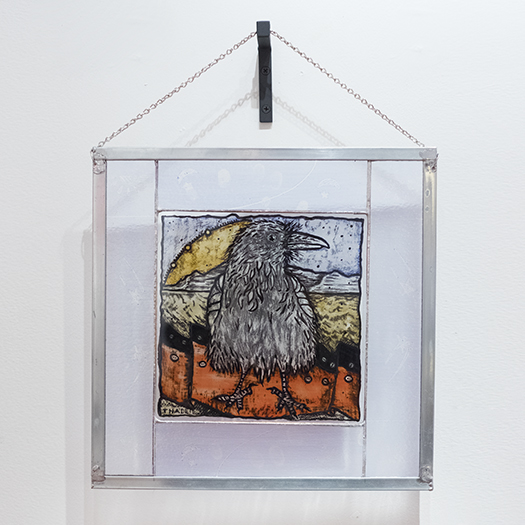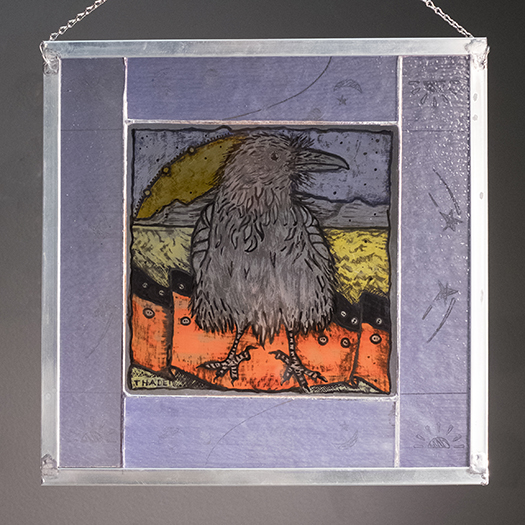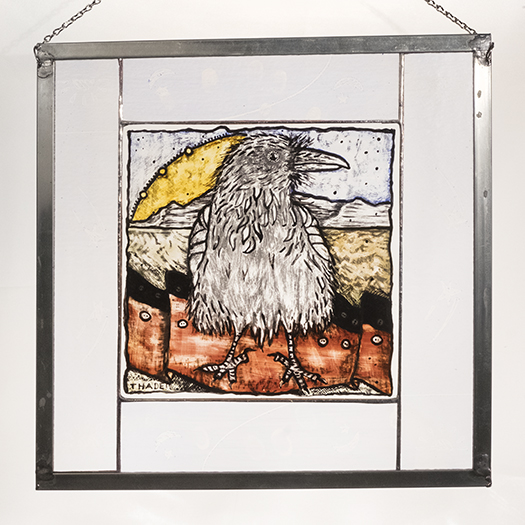Tlingit Raven
EXHIBITION:
Dealers’ Choice: A Staff Picks Exhibition“This panel is first painted in the manner of ancient glass panels for cathedrals, then mounted as a 12 x 12 inch stained glass piece using copper, lead and zinc. The reverse painting technique was taught to me by master artist Cappy Thompson of Seattle Washington who continues to mentor me. The painting is executed by layering paint in reverse order, because it is viewed through transparent glass. Each layer, or portion of a layer, must be fired to vitrification before the next layer is applied. Vitrification is the melting of earth elements into glass.
After applying the wet “paint” it dries to a fine powdery film which I protect from the slightest whisper of breeze that would dislodge a brush stroke. The six to eighteen hour long kiln firing at temperatures over 1000 degrees causes the precious gem powder and Moreno glass powder to melt and meld so as to adhere to the foundation glass.
The “paint” is made in Holland, by two families that have owned and operated their iconic windmills for over 500 years. The paint is a combination of glass and earth. The pigments, colors, are made on one huge set of grinding stones in one windmill. The colors are the rare earth elements such as, lapis, citrine, emerald and other glorious colors.
The other windmill grinds the carrier, or glass, imported from Murano, Italy. This part of the paint formula is finely ground crystal clear glass. When the pigment and carrier are combined, it is exported or hand delivered to select distributors worldwide. Glass paint artists strike agreements with the distributors, to purchase the “paint”. I buy it by the ounce, or portion of an ounce. There is only one distributor in North America.
Corporations are trying to replicate the paint, for shareholder profit of course. Results are interesting. I still buy from the one. Perhaps there can be only one. Of course, at times the manufacture and distribution of the paint is subject to the harsh winds of politics. At times colors are unavailable from the miners whose families collect the precious pebbles, the brightest purest colors. Their mine finds may be bright, but are frequently not desirable stones for others who cut-polish-set stones. Nevertheless, at times the miners’ families are at grave risk.
Glass “painters” are stingy with color, careful with manner of use, and proud of the delicate transparency when achieved.”
-Lois Thadei, 2017



